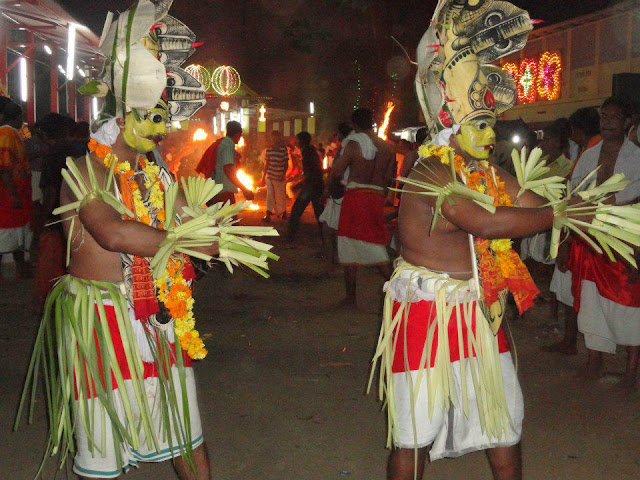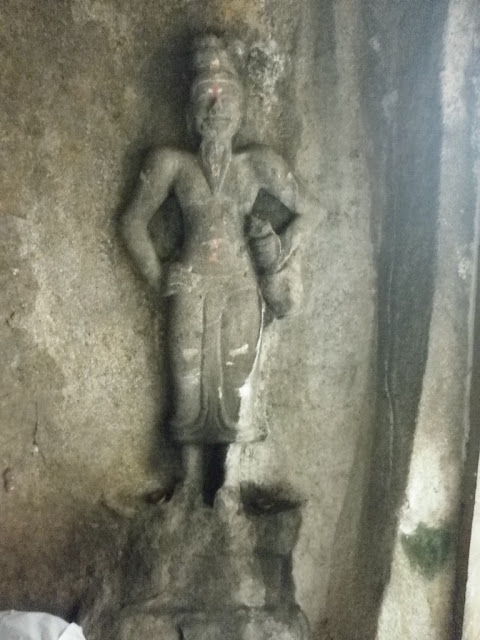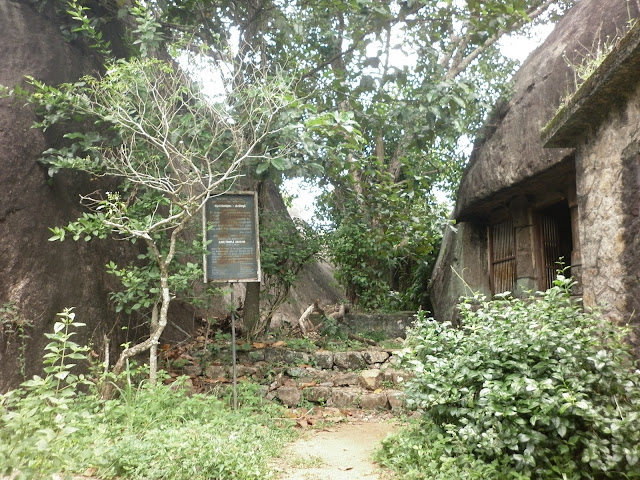History
Important Siva Temple in Central Travancore known as Thrikkaviyoor Mahadevar Temple.It is believed to have been constructed in the early years of the 10th century. The temple is more than thousand years old.But the actual time of construction is not known,like any other old temples. Certainly, this temple belongs to the oldest period of strucural temples.
Several historians, like Stella Kramrich has this opinion. The Perfect round Sreekovil with Sandhara style and its peculiar basment clarifies this opinion.
And the "KAVIYOOR SASANAAS" ,one of the oldest Sasanaas of AD has references to the gift that were offered to this temple There are Two inscriptions on the basement of the main sanctum dated 950 & 951 AD.The Sasanaas are surely an addition, since they wer written after the temple is constructed.
This is one of the famous major temples of Travancore Devaswam Board under Thiruvalla group of temples.
Several historians, like Stella Kramrich has this opinion. The Perfect round Sreekovil with Sandhara style and its peculiar basment clarifies this opinion.
And the "KAVIYOOR SASANAAS" ,one of the oldest Sasanaas of AD has references to the gift that were offered to this temple There are Two inscriptions on the basement of the main sanctum dated 950 & 951 AD.The Sasanaas are surely an addition, since they wer written after the temple is constructed.
This is one of the famous major temples of Travancore Devaswam Board under Thiruvalla group of temples.
Main Prathishta : Lord Mahadeva
- Lord Hanuman
- Dakshinamoorthy(Lord Siva along with Ganapathy)
- Sreemoola Rajeswari (Parvathy, Prathishta done in the year 1068).
- Sreekrishnan(with oldest round Sreekovil)
Festivals:
1.Thiruvutsavam (December - Janruary) every year starts "Thiruvaathira" in Dhanu masa and ends on 10th day by Araattu Ezhunnellippu.
'Utsavabali','Seva','Pallivetta' are the main functions during Thiruvutsavam.
'Utsavabali','Seva','Pallivetta' are the main functions during Thiruvutsavam.
2.Sivaratri-February/March->Vilakkezhunnellippu(lighting of 8000 Diyas of temple by devotees of 8 Kara's(Desam).
3. Sahasra Kalasam(Abhishekam with 100 pots consisting 1 gold pot,10 silver pot and remaining copper pots during 10 days.
Main Offerings for Lord Mahadeva:
Dhara, Muzhukkappu.Chatussatham
Art Work
The "DAARUSILPAS"(wood sculpture) seen around the temple belong to the 17th century.The wood carvings on the outer wall of the Sreekovil (sanctum sanctorum), inner roof of Balickalpura and Namaskara Mandapam are excellent. The Temple itself is a beautiful specimen of Kerala style archetecture.
The "DAARUSILPAS"(wood sculpture) seen around the temple belong to the 17th century.The wood carvings on the outer wall of the Sreekovil (sanctum sanctorum), inner roof of Balickalpura and Namaskara Mandapam are excellent. The Temple itself is a beautiful specimen of Kerala style archetecture.
Hanuman Swami
The Hanumanswami Temple in the Temple complex is very famous.
Main Festivals -
1.Hanumath Jayanthy, the birth anniversay of Lord Hanuman is also celebrated along with Thiruvutsavam (December- January)."Pushpa Radham" (Chariot decorated with full of flowers) is the main attraction on Hanumath Jayanthy day. The "Ghoshayaathra"(rally) starts from Njaliyil Bhagavathi Temple.
2.Pantrantukalabham - August (Abhishekam with Sandal paste)The Hanumanswami Temple in the Temple complex is very famous.
Main Festivals -
1.Hanumath Jayanthy, the birth anniversay of Lord Hanuman is also celebrated along with Thiruvutsavam (December- January)."Pushpa Radham" (Chariot decorated with full of flowers) is the main attraction on Hanumath Jayanthy day. The "Ghoshayaathra"(rally) starts from Njaliyil Bhagavathi Temple.
Main Offerings for Lord Hanuman:
Vatamala , Aval Nivedyam (Aval Panthirunaazhi),Vettila mala,Thrikkai venna & Venna charthu.
Location: 6 Km from Thiruvalla town is well connected by other major cities by road and rail.Nearest towns are Pathanamthitta, Changanachery and Kottayam
Getting there:
The nearest railway station - Thiruvalla
Nearest airport - Cochin International airport.

















































